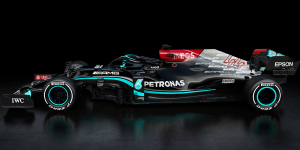Throughout my second year at UCL, I had the opportunity to support the UCL Ventura Team with new projects. The UCL Ventura Team is most famous more developing the CPAP device (a continuous positive airway pressure device) and delivering 10,000 units to the NHS during the outbreak of the Covid-19 pandemic in early 2020. The aim of the CPAP is to help Covid patients administer oxygen by increasing the oxygen concentration and the pressure of the air.
In particular, I supported the UCL Ventura Team in two projects:
- Dental Equipment Device
- CPAP V3 Device (Continuous Positive Airway Pressure Device
Dental Equipment Device
The dental equipment device is a new concept that aims to decrease the transmission of aerosols. Many dental procedures produce extensive aerosols and splatter that are routinely contaminated with bacteria, viruses and blood – this represents a risk for the surgeon and his/her assistants of catching the disease.

My role in this project was to validate the performance of the concept using CFD (computational fluid dynamics). In particular, I used 3D steady-state compressible simulations as the device used the Coanda effect. My simulations have shown that the concept does provide the desired performance which led to manufacturing a prototype. The prototype proved working a real life and a correlation between the CFD simulations and real world performance was established. This project was supervised by Prof. Tim Baker (Biomedical Engineer and Associate Professor at UCL) and Dr. Rebecca Shipley (Director of Healthcare Engineering).
CPAP V3 (Continuous Positive Airway Pressure Device)
As mentioned above, the UCL Ventura Team together with Mercedes-AMG High Performance Powertrains developed the CPAP device in response to the Covid pandemic. In 2021, a new project was initiated to begin the design of the CPAP V3 version, this time by the UCL Ventura Team only. The CPAP co-developed with Mercedes has proven to be very effective for treating Covid, but can also be used for treating other respiratory diseases (pneumonia, asthma, COPD and pulmonary hypertension) in developed countries where oxygen supply is not an issue.
The CPAP V3 aims to deliver the same performance, but reduce the oxygen consumption by a factor of 10 to make it feasible for treating respiratory diseases in LMICs (low and medium in come countries). The new CPAP system aims at only consuming the amount of oxygen that the patient requires. Below is a PostNote I created as part of my project.
POSTnote_Treating_Respiratory_DiseasesDownload
For this project, my role was again performance validation of the concept using CFD. In particular, I used 3D transient simulations to simulate the breathing cycle of a patient using the new CPAP. A 3D model was created in Autodesk Fusion 360, CFD simulations on SimScale, data exportation on ParaView and final FiO2 (fraction of inhaled oxygen) in Matlab. My simulaiton
The simulation conclusion is that the FiO2 inspired by the patient never dropped below 95% during any moment in the inspiratory part of the respiratory cycle. More importantly, the FiO2 stays constant at 100% (i.e. pure oxygen) until the critical 70% of the tidal volume are inhaled even at 9cmH20 PEEP.

For more details (the physical model, simulations and the report), please get in touch.
This project was supervised by Prof. Tim Baker.

